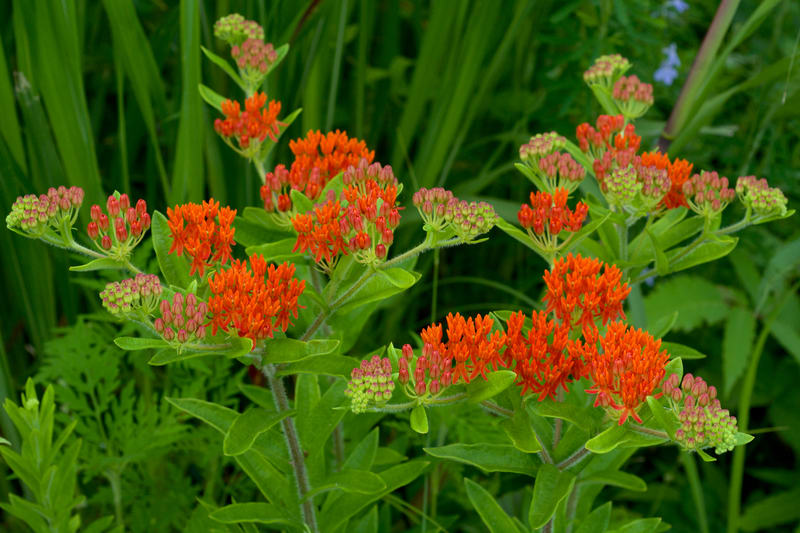Butterfly Weed, Pleurisy Root, Orange Milkweed, Tuberous Milkweed, Chiggerflower
Asclepias tuberosa

🌿 Morphology
🌞 Growing conditions
🌍 Origin and family
🌾 Uses
Warning: Despite the care taken in writing this sheet, it is essential to cross-reference sources before using or consuming any plant. When in doubt, consult a qualified professional
Permaculture uses
Butterfly Weed is valuable in permaculture for attracting pollinators, especially monarch butterflies, and other beneficial insects to the garden. The roots were traditionally used medicinally, but should be taken with caution as with all cardiac glycosides. It is primarily grown as an ornamental. Certain cultivars like 'Hello Yellow' offer different color variations.
Permapeople description
Asclepias tuberosa, the butterfly weed, is a perennial flowering plant native to eastern and southwestern North America. It is known for its bright orange flowers and is a popular nectar source for butterflies.
Botanical description
Asclepias tuberosa is a herbaceous perennial plant native to eastern North America. It grows to a height of 1-3 feet. The stems are hairy and erect. The leaves are lanceolate to oblong, alternate, and 2-6 inches long. Unlike other milkweeds, it lacks milky sap. The flowers are bright orange, though yellow and red varieties exist, and are arranged in umbels. Flowering occurs in summer. The fruit is a follicle (pod) containing seeds with silky hairs for wind dispersal. The plant grows from a deep taproot.
Companion planting
Butterfly Weed is a good companion plant for other pollinator-attracting plants such as coneflowers, bee balm, and black-eyed susans. Avoid planting near crops that are susceptible to aphids, as milkweed can sometimes attract them.
Propagation methods
Propagation is typically achieved through seed sowing in spring or fall. Scarification or stratification may improve germination rates. Root cuttings can also be taken in late winter or early spring. Division of established clumps is another possible method.
History and traditions
Native American tribes traditionally used the root of Asclepias tuberosa for its medicinal properties, primarily as a treatment for pleurisy and other lung ailments, hence the name 'Pleurisy Root'. They also used it as a poultice for wounds and sores. The plant has also been used in traditional herbal medicine as a diuretic and expectorant.
Usage calendar
Flowering: June-August. Seed Collection: September-October. Planting: Spring or Fall. Pruning (deadheading): After flowering to prevent unwanted self-seeding.
